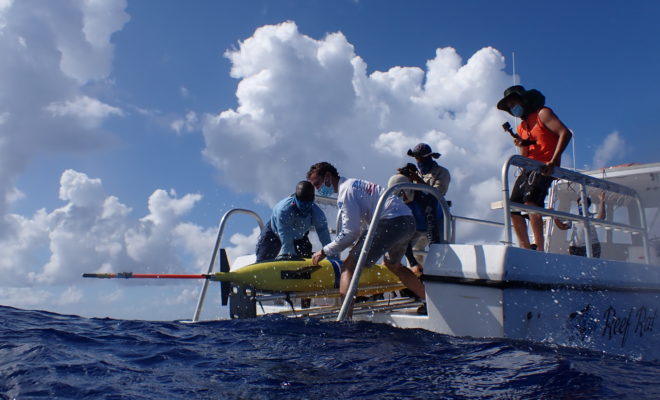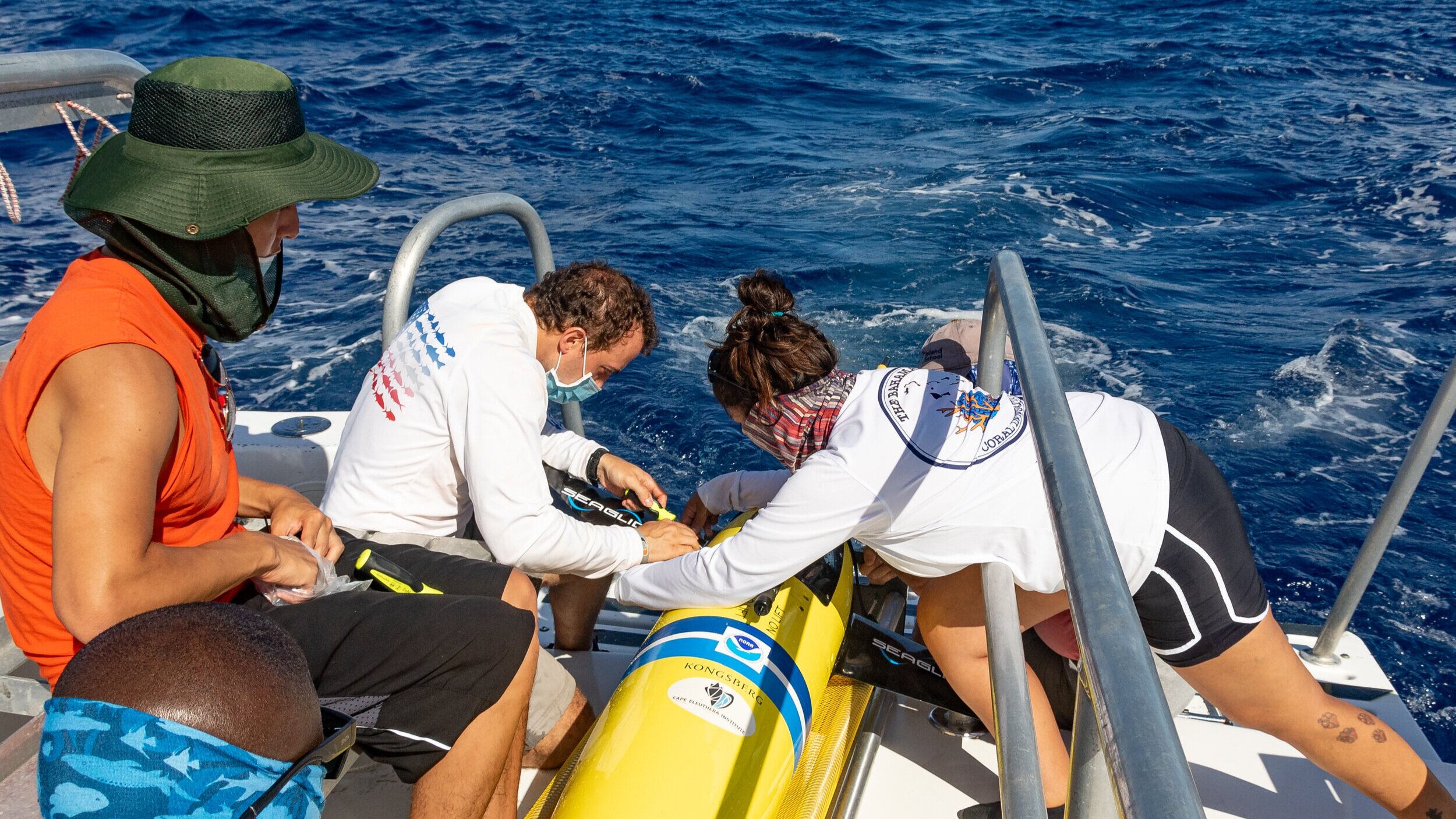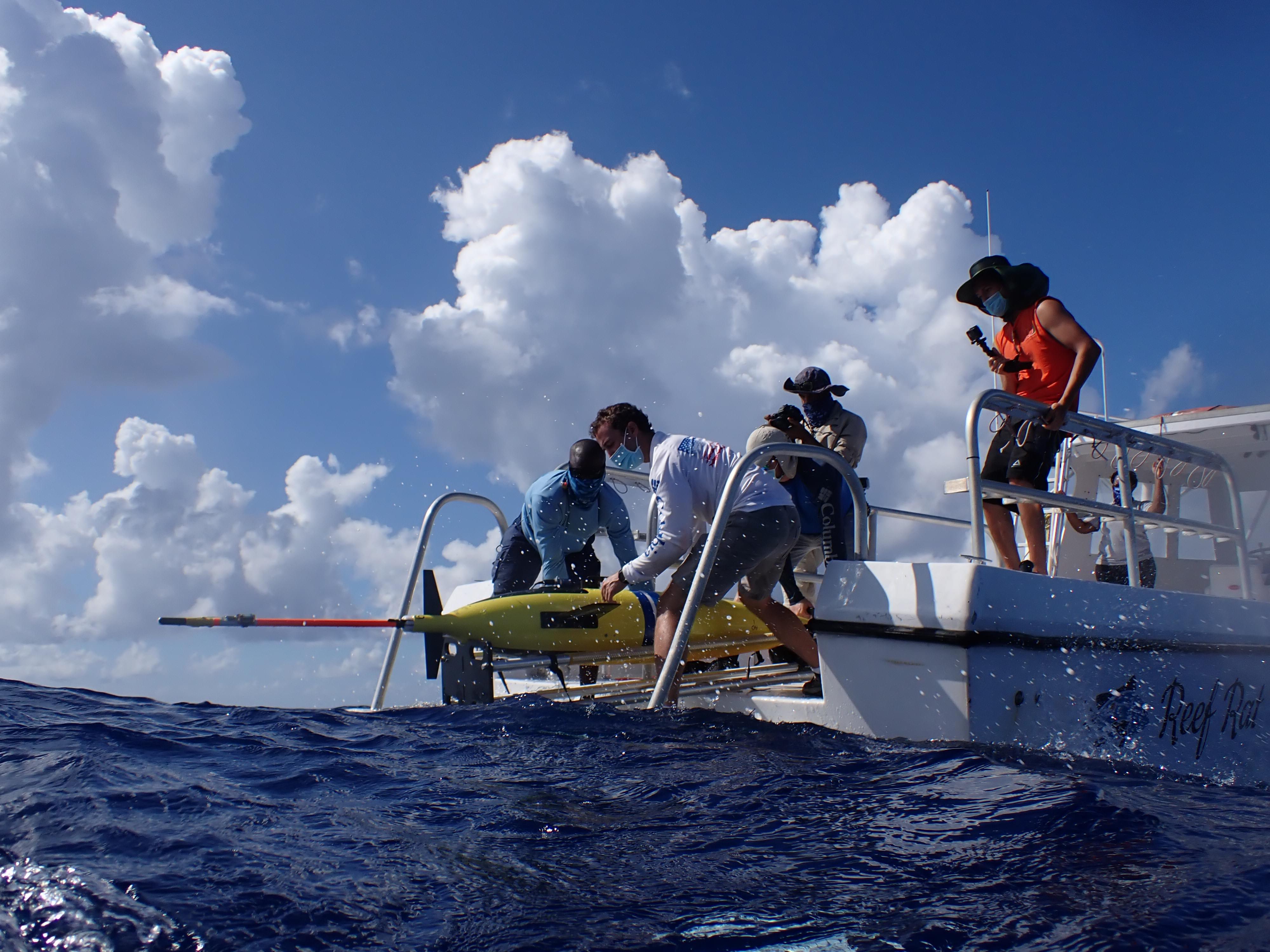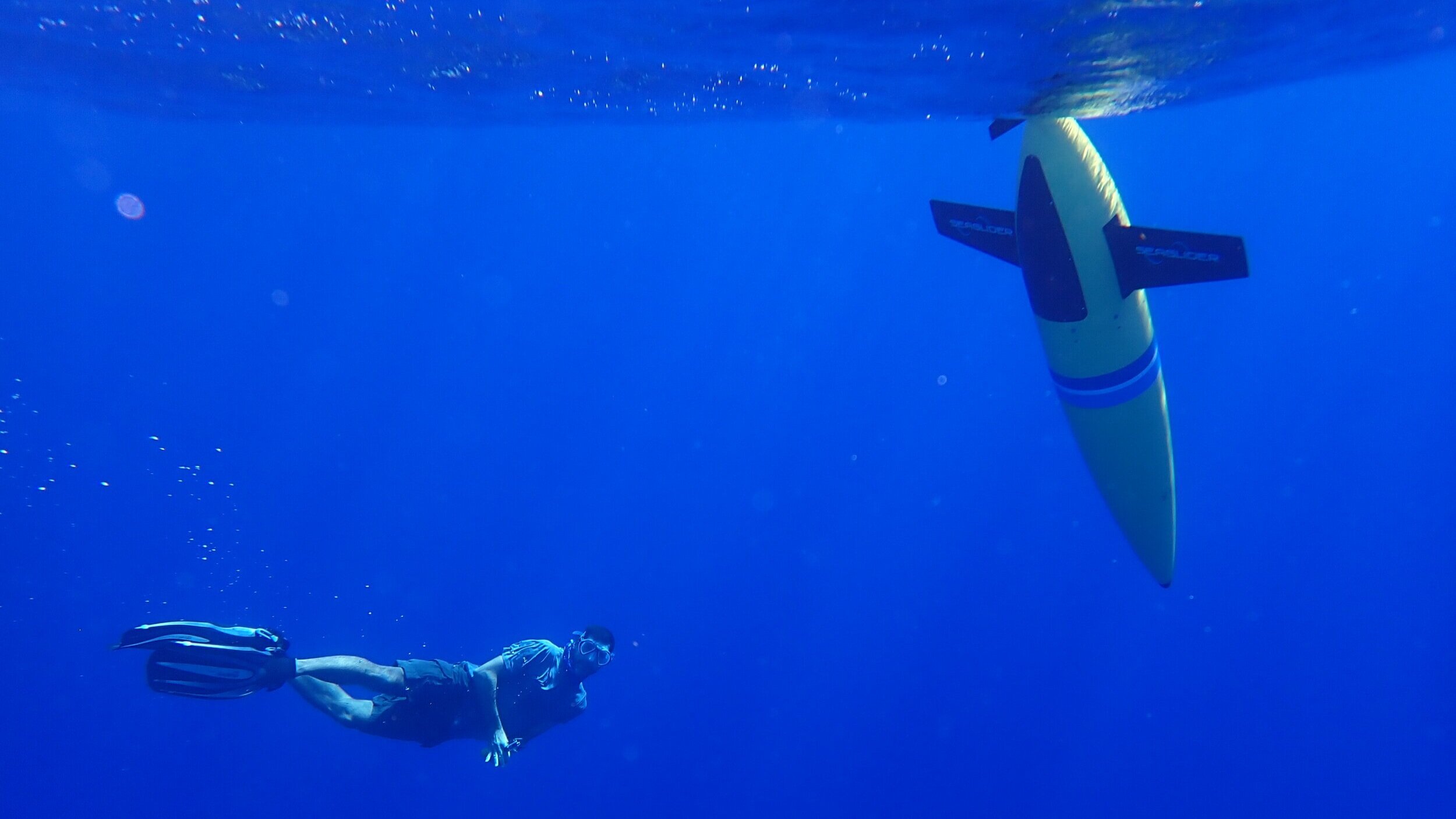The water was choppy as the team of scientists from the Cape Eleuthera Institute at The Island School travelled from one end of South Eleuthera to the other and then over the underwater ridge between Cat Island and Eleuthera. The mission of the trip was to launch an autonomous seaglider into the open Atlantic Ocean.
Cape Eleuthera Institute scientists prepare to launch the sea glider.
The ultimate goal of this project is to take observational data of the upper ocean to improve hurricane forecasting in the North Atlantic Ocean. There are many partners throughout the Caribbean and North America working in collaboration with NOAA and the University of Miami on this regional project. The glider deployment with CEI is the first done in The Bahamas. This is really important work because The Bahamas is one of the most hurricane prone countries in the North Atlantic due to its location and proximity to Florida. This nation has historically been affected by the four different hurricane types, which develop in different areas in the North Atlantic basin.
Cape Eleuthera Institute scientists launch the sea glider off the coast of Eleuthera.
The Seaglider is a torpedo-shaped autonomous vehicle that measures upper ocean characteristics, like temperature, salinity and conductivity levels. This is significant because hurricane intensification and development is influenced by sea surface temperature as a kind of fuel for hurricanes. Sea surface salinity has also been linked to intensifying hurricanes. The glider does dives in the upper ocean to monitor the movement of different ocean masses that have unique temperatures and salinity levels as time goes by.
Dr. Nick Higgs of the Cape Eleuthera Institute dives alongside the glider during its launch.
The glider was deployed just off the east coast of Eleuthera at a depth of 3000 m. The glider performed a few test dives with instructions sent over satellite from the NOAA team in Miami before heading out on its mission. It will now remain in the ocean for the rest of the hurricane season. As a hurricane moves over the area that the sea glider is in, the glider can take measurements of the changes in the ocean masses. It will be recovered in November.
By Marjahn Finlayson
Research Scientist



